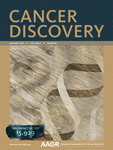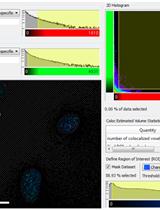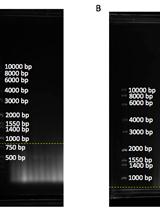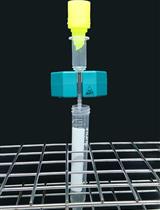- EN - English
- CN - 中文
Telomerase Repeated Amplification Protocol (TRAP)
端粒酶重复扩增实验(TRAP)
发布: 2015年11月20日第5卷第22期 DOI: 10.21769/BioProtoc.1657 浏览次数: 22646
评审: HongLok LungVanesa Olivares-IllanaAnonymous reviewer(s)
Abstract
Telomeres are found at the end of eukaryotic linear chromosomes, and proteins that bind to telomeres protect DNA from being recognized as double-strand breaks thus preventing end-to-end fusions (Griffith et al., 1999). However, due to the end replication problem and other factors such as oxidative damage, the limited life span of cultured cells (Hayflick limit) results in progressive shortening of these protective structures (Hayflick and Moorhead, 1961; Olovnikov, 1973). The ribonucleoprotein enzyme complex telomerase- consisting of a protein catalytic component hTERT and a functional RNA component hTR or hTERC- counteracts telomere shortening by adding telomeric repeats to the end of chromosomes in ~90% of primary human tumors and in some transiently proliferating stem-like cells (Shay and Wright, 1996; Shay and Wright, 2001). This results in continuous proliferation of cells which is a hallmark of cancer. Therefore, telomere biology has a central role in aging, cancer progression/metastasis as well as targeted cancer therapies. There are commonly used methods in telomere biology such as Telomere Restriction Fragment (TRF) (Mender and Shay, 2015b), Telomere Repeat Amplification Protocol (TRAP) and Telomere dysfunction Induced Foci (TIF) analysis (Mender and Shay, 2015a). In this detailed protocol we describe Telomere Repeat Amplification Protocol (TRAP).
The TRAP assay is a popular method to determine telomerase activity in mammalian cells and tissue samples (Kim et al., 1994). The TRAP assay includes three steps: extension, amplification, and detection of telomerase products. In the extension step, telomeric repeats are added to the telomerase substrate (which is actually a non-telomeric oligonucleotide, TS) by telomerase. In the amplification step, the extension products are amplified by the polymerase chain reaction (PCR) using specific primers (TS upstream primer and ACX downstream primer) and in the detection step, the presence or absence of telomerase is analyzed by electrophoresis. TSNT is, an internal standard control, amplified by TS primer. NT is its own reverse primer, which is not a substrate for telomerase. These primers are used to identify false-negative results by if the gel lacks internal control bands.
Materials and Reagents
- Cancer cells (H1299 non-small cell lung, A549 non-small cell lung cancer cells)
- Tris-HCl (pH 8.3 and pH 8.0)
- Magnesium Chloride (MgCl2) (Thermo Fisher Scientific, catalog number: BP241 )
- Potassium chloride (KCl) (Sigma-Aldrich, catalog number: P9541 )
- TweenTM 20 (Thermo Fisher Scientific, catalog number: BP337 )
- Ethylene glycol-bis(2-aminoethylether)-N, N, N′, N′-tetraacetic acid EGTA (Sigma-Aldrich, catalog number: E3889 )
- Ethylenediaminetetraacetic Acid (EDTA) (Thermo Fisher Scientific, catalog number: BP-120 )
- Nonidet-P40 (Fluka BioChemika, catalog number: 74385 )
Note: Currently, it is “Sigma-Aldrich, catalog number: 74385 ”. - Glycerol (Sigma-Aldrich, catalog number: G5516 )
- 2-mercaptoethanol (Sigma-Aldrich, catalog number: M3148 )
- 4-(2-Aminoethyl) benzenesulfonyl fluoride hydrochloride (AEBSF) (Sigma-Aldrich, catalog number: A8456 )
- dNTP (Invitrogen)
- Cy5-TS primer (Sigma-Aldrich)
- ACX (reverse primer) (Sigma-Aldrich)
- TSNT (36-bp internal standard control) (Integrated DNA Technologies)
- NT (reverse primer for internal standard) (Sigma-Aldrich)
- Takara Taq DNA polymerase, hot start version (Takara Bio Company, ClonTech, catalog number: R007A )
- 40% acrylamide and bis-acrylamide solution (19:1) (Bio-Rad Laboratories, catalog number: 161-0144 )
- Ammonium persulfate (APS) (Bio-Rad Laboratories, catalog number: 161-0700 )
- N, N, N’, N’-Tetramethylethylenediamine (TEMED) (Sigma-Aldrich, catalog number: T9281 )
- Primer mix (see Recipes)
- Cy5-TS primer (see Recipes)
- 10x TRAP reaction buffer (see Recipes)
- 50x dNTP (see Recipes)
- NP-40 lysis buffer (see Recipes)
Equipment
- Polymerase Chain Reaction (PCR) Thermo Cycler (Bio-Rad Laboratories, model: PTC-1148 )
- Typhoon PhosphorImager® scanner system (Amersham Biosciences, GE Healthcare, model: Typhoon TRIO )
Software
- ImageQuant Software (Molecular Dynamics)
Procedure
文章信息
版权信息
© 2015 The Authors; exclusive licensee Bio-protocol LLC.
如何引用
Mender, I. and Shay, J. W. (2015). Telomerase Repeated Amplification Protocol (TRAP). Bio-protocol 5(22): e1657. DOI: 10.21769/BioProtoc.1657.
分类
癌症生物学 > 无限复制 > 细胞生物学试验 > 核酸测序
癌症生物学 > 无限复制 > 细胞生物学试验 > 蛋白质
您对这篇实验方法有问题吗?
在此处发布您的问题,我们将邀请本文作者来回答。同时,我们会将您的问题发布到Bio-protocol Exchange,以便寻求社区成员的帮助。
提问指南
+ 问题描述
写下详细的问题描述,包括所有有助于他人回答您问题的信息(例如实验过程、条件和相关图像等)。
Share
Bluesky
X
Copy link














